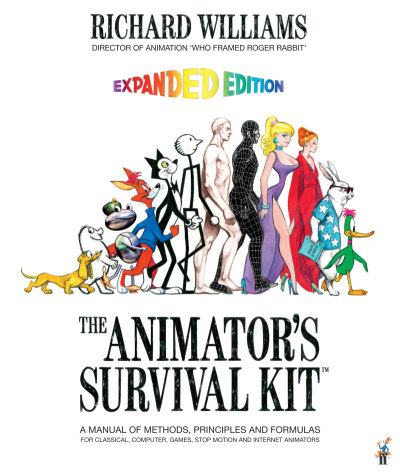Harold Whitaker and John Halas' "Timing for Animation" has been my favorite "how to" book on animation for many years. It gives you enough information to see how its done without overexplaining. It keeps things basic, yet manages to impart the fundamental complexities of the process.
For example
"To express depression, the charater must appear to have no energy. His body droops forwords, his head hangs on his chest, his knees sag and his movements are slow, with frequent long holds and sighs. Anything that can be used in the drawing to convey the feeling of depression should be used --the hair and the clothes hang limp, perhaps the hat sinks, and a general lightness of step."
You are given the idea, then shown a simple execution.
Some other bits, such as walks or effects animation, are given a little more step by step detail. Overall, its a breezy read and a top reference source.
For many years the book was out-of-print. Focal Press republished it in the late 1990s. For the revised edition, Tom Sito was brought on to add to the original. I'm a great fan of his "Drawing the Line" and recommend it not just to animators but to anyone interested in American cultural history.
His contributions to the new edition seem minimal. There's not much to improve on. A few pages are added concerning digital process -tacked on, more like it, in a seemingly craven attempt by the publisher to make this title "relevant".
More telling (from a cultural standpoint) are the added pages on storyboarding and editing. Is this because animation work in the United States has evolved into shipping boards to Asia and editing the work sent back?
The greater letdown of this edition is the re-design. It's now on glossy stock with a weak sans serif font, there's a colored tab along the top that is unnecessary. Layouts are switched around to be less clear and the incorporation of new art (a few images from Bill Plympton, plus others) is more distracting than enlightening.
Regardless, it's an important piece of any animation library.
Richard Williams' "The Animator's Survival Kit: Expanded Edition" augments the original with 35 pages of additional material.
The first edition was exhaustive, especially in its specific analysis walks and other actions. It's a great resource for advanced study ("Timing for Animation" is a superior introductory text).
The new information is in line with the Williams' earlier writing. The expansion wasn't necessary but it is welcome. This is a book which attempts to be a bible of animation process -the more information attached in an orderly manner, the more successful the book is.



1 comment:
I'm also an enormous fan of the Harold Whitaker book. It's a gem. I used to xerox pages for the class I was teaching at NYU. You couldn't find anything more direct, sophisticated and
uncompicated for beginners.
Post a Comment